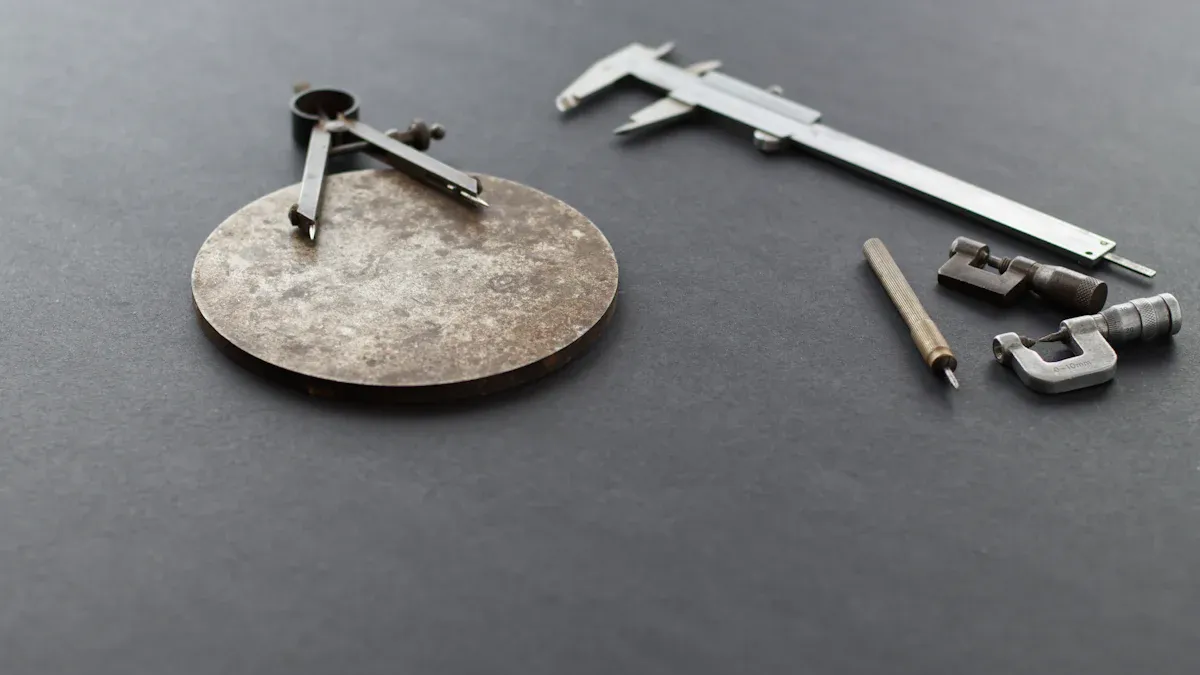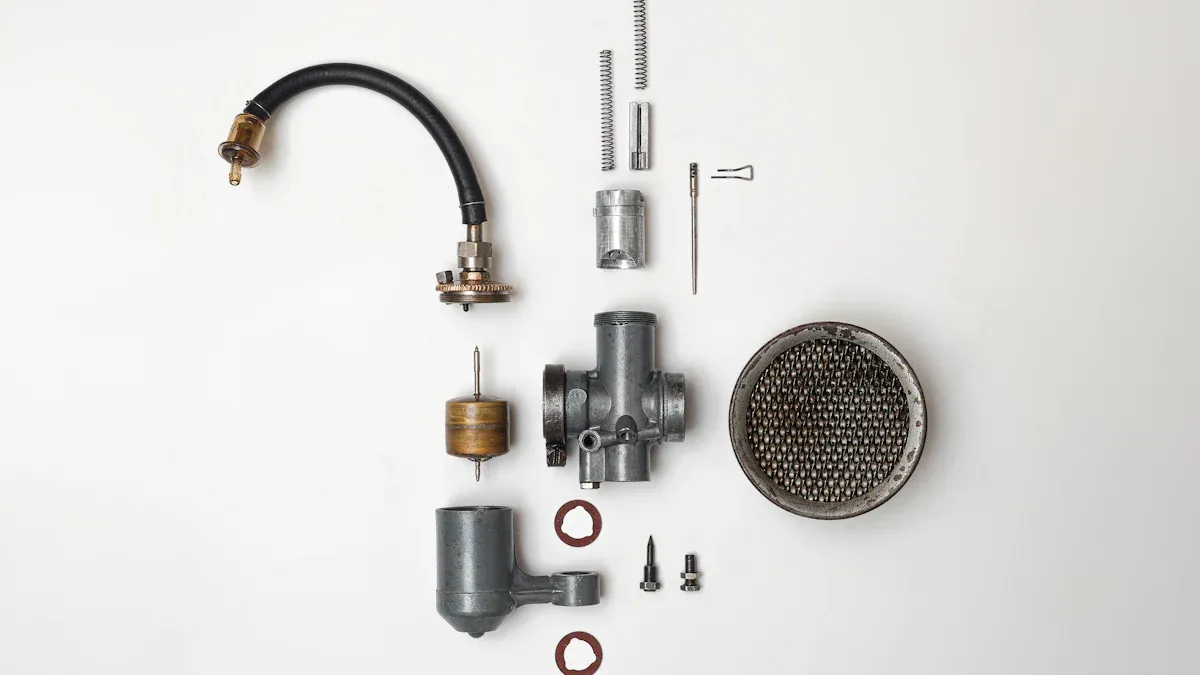How Ultra-Thin Wall Nitinol Tubing is Made for Precision Instruments

Ultra-Thin Wall Nitinol Tubing for Precision Instruments is essential for precise instruments. It excels in applications where performance and reliability are critical. This tubing is both strong and flexible, making it highly useful. The ultra-thin wall design helps meet exact size requirements. Its unique features deliver outstanding results while adhering to strict regulations.
Key Takeaways
Ultra-thin nitinol tubing is important for precise tools. It is strong and flexible, making it great for medical and aerospace uses.
Makers use pure nickel and titanium with strict checks. This ensures the tubing works well in tough conditions.
The process includes heating, cold drawing, and mandrel drawing. These steps make the tubing strong and able to keep its shape, perfect for modern medical tools.
Material Selection and Alloy Composition
Pure Nickel and Titanium for Nitinol Tubing
Good nitinol tubing starts with pure materials. Purity is important because it affects how well the tubing works. Clean nickel and titanium make the tubing strong and long-lasting. Special methods like vacuum induction melting (VIM) and vacuum arc remelting (VAR) remove unwanted impurities. These processes help keep the tubing flexible and resistant to wear.
Titanium reacts easily with other elements, so it needs careful handling. Even tiny amounts of oxygen or carbon can change its properties. By keeping nickel and titanium very pure, manufacturers make sure the tubing works perfectly. Research shows that purer nitinol lasts longer under stress. This is vital for tubing used in tough jobs where it bends a lot without breaking.
Alloy Mix and Its Role in Precision
Nitinol's special features come from its exact mix of metals. It is made of nickel and titanium, but the ratio matters a lot. Usually, the mix has almost equal parts of both metals. More nickel makes the tubing super stretchy, while a balanced mix helps it return to its original shape.
Manufacturers can adjust the mix to fit specific needs. This is important for precise tools where small changes can affect performance. By controlling the alloy mix, they create nitinol tubes that meet strict standards. This ensures the tubing works well in challenging areas like medical tools or space equipment.
Keeping Quality High in Material Selection
Quality checks are key to making good nitinol tubing. Strict rules ensure the materials are safe and effective. Groups like ASTM International and the FDA set these rules. They require clean nickel and titanium and the use of VIM and VAR methods.
Manufacturers also look for certifications like ISO 9001 or AS9100. These prove they follow strict quality systems. Regular tests make sure the materials are strong and reliable. With these checks, manufacturers create nitinol tubing that meets high standards for precision and dependability.
Shaping and Tube Formation

Using Heat to Shape the Tubing
Making nitinol tubing starts with heating the metal. Heating makes the metal soft and easy to shape. Without heat, the metal might crack or break. This step helps form the basic tube structure. It is the first step in making thin-walled tubing.
Heating also improves the metal's inner structure. A better structure makes the tubing stronger and last longer. This is very important for tubing that bends a lot but must stay strong. By starting with heat, manufacturers prepare the metal for high-quality tubing.
Pulling the Tubing for Exact Sizes
After shaping, the tubing is pulled through small holes. This step is called cold drawing and happens at room temperature. Each pull makes the tubing thinner and closer to the needed size. Cold drawing is key for making very thin tubing.
Special methods like cold spray forming are used here. These methods help make tubing with unique shapes and features. For example, tubing can have slits or patterns built right in. Cold drawing is great for making tubing for special uses, like cooling systems.
Making Ultra-Thin Walls with Mandrels
To make super-thin walls, a rod called a mandrel is used. The mandrel goes inside the tubing while it is pulled through a hole. This keeps the tubing from collapsing and makes the walls even.
Mandrel drawing is important for nitinol tubing. It helps make tubing thin but still strong and bendable. This is crucial for things like medical tools, where tiny flaws can cause problems.
By using heat, pulling, and mandrels, manufacturers make top-quality tubing. These steps ensure the tubing is thin, strong, and reliable. This makes it perfect for precise tools and instruments.
Heat Treatment and Surface Finishing
Giving Shape with Heat Treatment
Heat treatment helps nitinol tubing remember its shape. After being worked on, the tubing is heated between 400°C and 500°C. This makes it stronger and able to return to its shape after bending. This is useful for tools like medical devices that bend often.
The heat level and time affect how the tubing works. For example, heating at 623 K raises the transformation temperature (Af). Higher temperatures, like 773 K or 823 K, lower it. The table below shows these effects:
Heat Treatment Temperature (K) | Duration (min) | Effect on Af |
|---|---|---|
623 | N/A | Maximum Af |
773 | >60 | Minimum Af |
823 | <60 | Minimum Af |
873 | >60 | Minimum Af |
Careful control of heat ensures the tubing works well for advanced tools and tough jobs.
Protecting Against Rust with Passivation
Passivation stops nitinol tubing from rusting in harsh places. It cleans the surface and adds a protective layer. Research shows passivized nitinol resists damage better than other materials. For example:
Study | Findings |
|---|---|
Chakraborty et al., 2019 | Nitinol resisted chemical damage better than other materials. |
Gill et al., 2015 | Passivized nitinol was safe and didn’t cause harmful reactions. |
Mohammadi et al., 2019 | Coating improved both safety and rust resistance of nitinol. |
Cattaneo et al., 2019 | Polished nitinol reduced clotting and platelet sticking. |
Passivation keeps the tubing strong and safe for uses like medical implants.
Smoothing Surfaces with Polishing
Polishing is the last step for nitinol tubing. It makes the surface smooth and precise, which is very important. Automated methods like electropolishing make surfaces even and polish tricky shapes.
Electropolishing smooths surfaces and keeps them even.
It polishes inside areas and complex shapes regular methods can’t.
It also boosts safety and rust resistance, great for medical tools.
These methods make sure the tubing is high-quality and ready for important uses.
Applications in Precision Instruments

Big Changes in Medical Tools
Nitinol tubing has changed how medical tools are made. Its special features, like being super stretchy and safe for the body, make it great for important uses. Doctors use nitinol tubes to make stents that expand on their own, bendy guidewires, and advanced catheters. These tools help patients heal faster and lower surgery risks.
Nitinol is popular in medicine because it’s both strong and flexible. For example, custom nitinol tubes have helped create new ways to do less invasive surgeries. This lets doctors use tools that fit the body and work really well. AccuPath makes top-quality nitinol tubing for these high-tech medical tools.
Important Uses in Planes and Factories
Nitinol tubing is also key in planes and factory tools. It’s strong, light, and works in tough conditions. For example, military planes use nitinol for strong joints in hydraulic systems. Nitinol plugs seal fuel systems under high pressure.
Use | What It Does | Why It’s Good |
|---|---|---|
Hydraulic system joints | Connects parts in planes. | Strong even in tough weather. |
Fuel system plugs | Seals fuel lines in engines. | Works under high pressure. |
Special actuators | Used in machines and medical tools. | Light but very strong. |
AccuPath’s nitinol tubing is made to be precise and reliable, meeting strict rules for these uses.
Strong and Long-Lasting Tubing
Nitinol tubing is very strong and lasts a long time. It doesn’t wear out easily, even when used a lot. This makes it perfect for tools that need to work well over and over. It also doesn’t rust, so it works in tough places.
Medical tool makers like nitinol because it can be shaped into tiny, detailed parts. Whether it’s for medical, airplane, or factory tools, nitinol tubing works well and lasts. AccuPath makes sure their tubing meets high standards, making them a trusted choice for important jobs.
Making ultra-thin wall nitinol tubing needs careful steps. This process ensures high quality and great features. For instance, the metal mix stays steady at 50% molar. Tests like EDS show very few unwanted materials. The table below shows important details about its reliability:
Metric | Description |
|---|---|
Elemental Ratio | The metal mix stays steady at 50% molar after making. |
EDS Analysis | Very little copper shows good control of unwanted parts. |
Prototyping Capability | Quick prototyping allows tricky shapes for medical tools. |
This tubing is bendable, strong, and safe for the body. It’s used in medical, space, and factory tools.
FAQ
Why is nitinol tubing special for precision tools?
Nitinol tubing is strong, bendy, and remembers shapes. These features make it perfect for medical tools, airplane parts, and factory machines needing accuracy and toughness.
How do they make nitinol tubing with thin walls?
Thin walls are made using mandrel drawing. This method keeps the walls even and stops them from breaking. The result is light but strong tubing.
Can nitinol tubing handle rust in tough places?
Yes, nitinol tubing gets a protective coating called passivation. This layer stops rust and makes it safe for medical and airplane uses.
See Also
The Manufacturing Process of Nitinol Tubing for Medicine
Nitinol Tubing's Impact on the Future of Medical Devices
The Importance of Nitinol Tubing in Modern Medical Uses
Nitinol Tubing's Role in Enhancing Minimally Invasive Surgery

